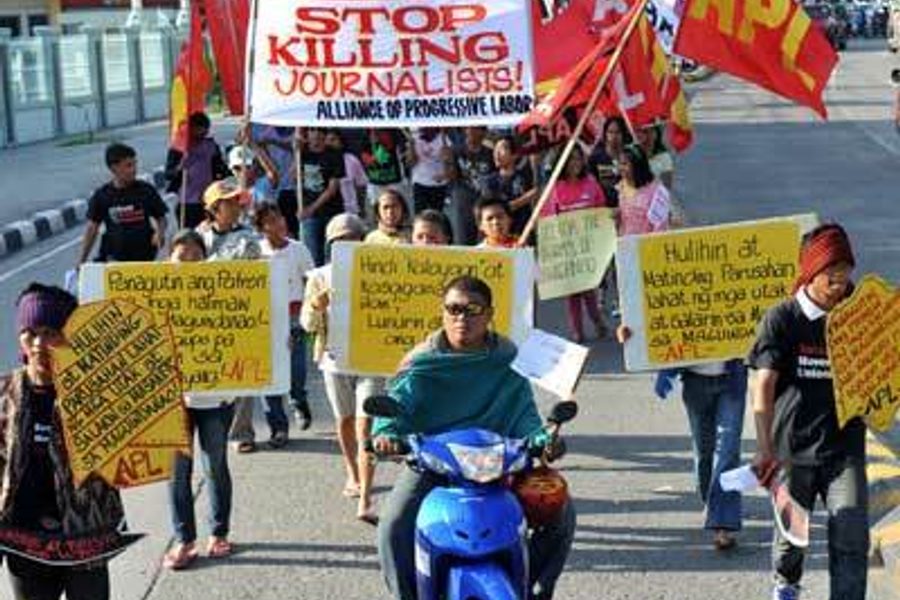
Last week in the Phillipines, dozens of politicians and journalists were dragged from a campaign convoy by about 100 armed men. The convoy was on its way to register a candidate for governor of the province of Maguindanao. Authorities eventually recovered 57 bodies from mass graves. Many of the victims were mutilated and some of the female victims appeared to have been raped.
Andal Ampatuan Jr., a powerful warlord who until this week was a close ally of Phillipine President Gloria Arroyo, has been charged with seven counts of murder, the government said. The central government has historically given local clan leaders and their private armies broad leeway in exchange for fighting Islamic insurgents and delivering votes at election time.
The November 23 massacre has galvanized organized labor to resist rampant warlordism in the region. Trade unions and media guilds are demanding an end to the prevailing culture of impunity.
A coalition of unions called KONTRA WTO, originally formed to protest the World Trade Organization, is turning its attentions to fighting the local strongmen and their political patrons.
KONTRA WTO expressed solidarity with the victims, over half of whom were journalists killed on the job. (At least 29 of the victims were journalists.) Two other victims were unionized public employees. According to the Alliance of Progressive Labor-Mindanao (APL-M), at least 13 of the dead journalists were “personally known and considered as friends” of APL-M.
The Alliance, a KONTRA WTO affiliate, sees warlordism as a byproduct of social inequality. It said in a statement last week that
If the economic structures consign the majority of our workers to poverty, the political structures trap them in a situation of powerlessness. Thus, to keep their hold on power, the ruling elites are corrupting the electoral system. Money-politics have rendered elections in this country almost meaningless.
In a separate action, hundreds of journalists and human rights activists demanded justice for the killers near presidential palace in Manila. Representatives of the National Union of Journalists, the College Editors Guild of the Philippines, the Confederation of Asean Journalists, and the National Press Club participated in the march. Arroyo’s press secretary made a surprise appearance, but was booed offstage when he tried to address the crowd.
Reporting has long been a dangerous job in the Philippines. The country is ostensibly a democracy, but telling the truth is an occupational hazard, especially when it comes to exposing official corruption. Even before the massacre, 59 reporters were murdered in the Philippines between 2001 and 2009, according to the National Union of Journalists. No one has ever gone to jail for any of these killings.
Security for journos is so bad that members of the Philippine Congress recently suggested that “legitimate and qualified journalists” be allowed to carry guns during the upcoming election season. But the vice chairman of the local chapter of the National Union of Journalists says that the media have already rejected that option on principle.
Nor is the Philippines a safe place to be a union activist. Labor leaders say nearly 90 activists have been abducted or killed since President Gloria Arroyo took power in 2001. In October, the International Labor Organization asked the Philippine government to probe the deaths of union activists.
The massacre has focused global attention on press freedom and the rule of law in the Philippines. The atrocity has been condemned by the United Nations, the European Union. And the World Association of Newspapers and News Publishers recently issued a resolution condmeming the massacre and urged the government to bring the perpetrators to justice.







